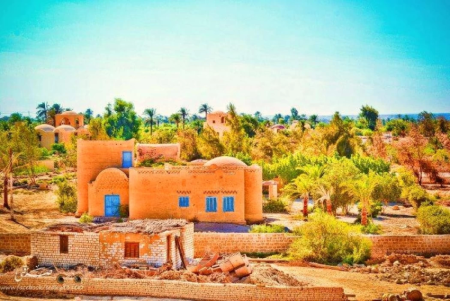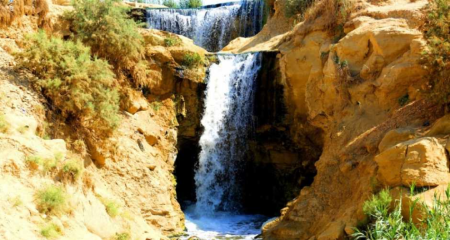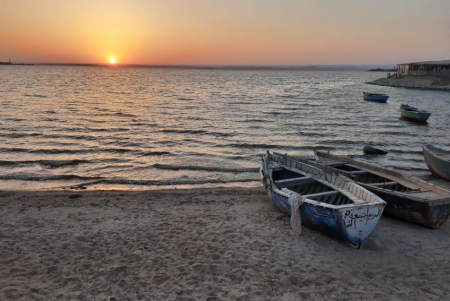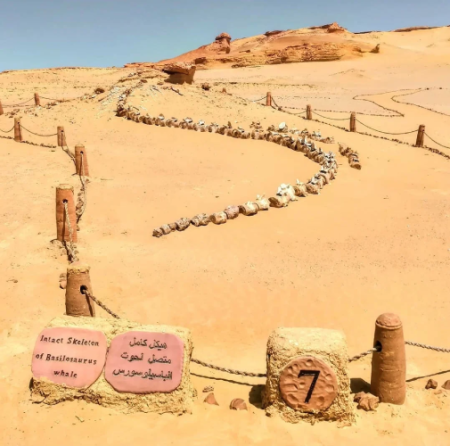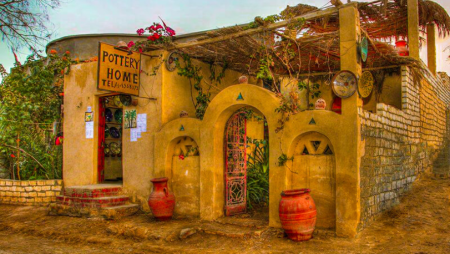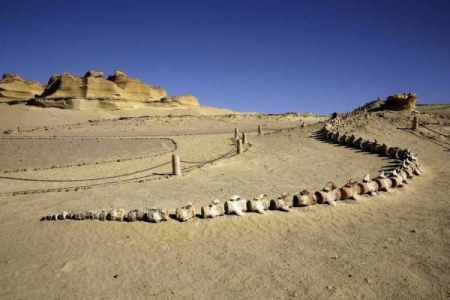Fayoum Oasis

Fayoum Oasis: Egypt’s Hidden Gem of Nature, History, and Timeless Charm
Just a stone’s throw from Cairo city, the Fayoum Oasis unfolds like a living painting—verdant fields, shimmering lakes, and whispering palms set against the backdrop of ancient sands. The Fayoum Oasis, one of Egypt’s oldest continuously inhabited regions, balances raw desert beauty with the serene rhythm of rural life. Here, the pulse of history beats through archaeological ruins, while the modern-day communities thrive around fertile lands nourished by canals stemming from The Nile River.
For travelers seeking something beyond crowded temples or bustling cities, Fayoum offers an escape that feels both intimate and epic. This oasis, roughly 100 kilometers southwest of Cairo, is a mosaic of nature reserves, lakes, ancient monuments, and charming villages like Tunis Village Faiyum. With its pottery workshops, eco-lodges, and tranquil scenery, Fayoum has become a beacon for sustainable tourism and artists looking to reconnect with authentic Egypt. Whether you’re wandering the shores of Qarun Lake or marveling at the fossils in Wadi Al Hitan, every step in Fayoum feels like a journey through time and nature intertwined.
In this complete guide, we’ll dive deep into the wonders of Fayoum Oasis—its geography, history, attractions, and cultural soul. Prepare for a virtual voyage through one of Egypt’s most underrated treasures, where the whisper of wind over dunes tells stories older than civilization itself.
The Geography and Climate of Fayoum Oasis
The Fayoum Oasis lies in a natural depression of the Western Desert, connected to the Nile River by the Bahr Yussef Canal. This canal has channeled life-giving waters into the oasis for thousands of years, transforming the desert basin into an agricultural paradise. The region spans over 1,270 square kilometers, featuring fertile farmland, golden dunes, and the serene waters of Qarun Lake—Egypt’s third-largest lake. Despite its proximity to Cairo, Fayoum maintains a cooler, more refreshing climate, especially during winter months.
The contrast between desert and delta is striking. While much of Egypt struggles with arid conditions, Fayoum bursts with palm groves, orchards, and fields of wheat, olives, and citrus. The region’s mild weather and vibrant ecosystems make it a haven for birdwatchers, especially near the wetlands of Wadi El Rayan, home to flamingos, herons, and migratory species that color the water’s edge like living art.
The Historical Significance of Fayoum Oasis
Fayoum’s history stretches back to the dawn of Egyptian civilization. Known in ancient times as ‘She-Resy’ or ‘The Southern Lake,’ the oasis was later renamed Crocodilopolis by the Greeks, after the crocodile god Sobek, who was worshiped here. Archaeologists have uncovered temples, tombs, and settlements dating as far back as the Middle Kingdom. The Temple of Sobek at Qasr Qarun stands as a testament to this ancient reverence for water and fertility, both crucial to survival in Egypt’s arid lands.
During the Ptolemaic and Roman periods, Fayoum flourished as a vital agricultural hub. The fertile soil and abundant water turned it into Egypt’s breadbasket, feeding generations of Egyptians. Remnants of Greek towns, Roman villas, and elegant mummy portraits—collectively known as the Fayoum Portraits—offer an intimate glimpse into this crossroads of cultures. These portraits, painted with haunting realism, are among Egypt’s most celebrated archaeological treasures.
Top Natural Attractions in Fayoum Oasis
Nature reigns supreme in Fayoum. At the heart of its appeal lies the stunning Wadi El Rayan, a protected area featuring cascading waterfalls—the only ones in Egypt. This natural wonder, surrounded by rolling dunes and tranquil lakes, provides unforgettable vistas and a soothing atmosphere. Visitors can camp under starlit skies or explore the desert by 4x4, embracing the wild rhythm of the land.
Equally fascinating is Wadi Al Hitan, or the Valley of Whales, a UNESCO World Heritage Site where fossils of early whales, some dating back 40 million years, lie embedded in the sand. It’s a surreal experience, walking through a prehistoric seabed in the middle of the desert. The site’s museum and eco-trails invite travelers to contemplate Earth’s evolution, making it an essential stop on any eco-tourist’s itinerary.
Qarun Lake: The Jewel of Fayoum
Qarun Lake is the soul of Fayoum Oasis. Once part of a much larger prehistoric lake, Qarun now covers around 230 square kilometers. Its saline waters attract fishermen, photographers, and nature lovers alike. The lake’s surroundings are dotted with small villages and ancient ruins like Qasr Qarun, where visitors can explore Greco-Roman architecture and ancient temples dedicated to Sobek.
At sunrise, the lake glows with hues of gold and silver, while at sunset, flocks of birds skim its surface. The area is also ideal for sustainable tourism, with local farms and eco-lodges offering rustic accommodations that blend seamlessly with nature. For those seeking tranquility away from urban hustle, Qarun Lake is pure bliss.
Tunis Village: Craftsmanship and Culture in the Heart of Fayoum
Perched on a hill overlooking Qarun Lake, Tunis Village Pottery has become a creative refuge for artists and travelers. Known for its handmade pottery, this charming village attracts visitors with its workshops, art galleries, and annual ceramics festival. The fusion of traditional Egyptian techniques with modern design gives Tunis pottery its global reputation.
Beyond art, Tunis Village is a model for sustainable living. Eco-lodges powered by solar energy, organic farms, and community projects have transformed it into a beacon of responsible tourism. Visitors can learn pottery-making, taste locally grown food, and mingle with artisans whose work reflects the spirit of Fayoum Oasis itself—authentic, timeless, and deeply rooted in the land.
Adventure and Eco-Tourism Experiences in Fayoum
Fayoum isn’t just about serene landscapes; it’s also a playground for adventurers. The dunes south of Wadi El Rayan invite sandboarding enthusiasts, while the sprawling desert beyond offers jeep safaris through breathtaking formations. Nearby sites like The White Desert of Egypt and The Crystal Mountain can be visited on extended trips, blending geology with adventure.
For photographers, the oasis offers endless inspiration—from migratory birds and lush fields to timeless villages and wind-sculpted dunes. Travelers who join Egypt Desert Tours often rank Fayoum among the most photogenic regions in the country. Its light, texture, and serenity create images that seem to belong to another age.
Local Life and Culinary Delights of Fayoum
Life in Fayoum flows with the rhythm of nature. Farmers tend to their crops at dawn, fishermen cast nets at Qarun Lake, and artisans mold clay into art. The community thrives on simplicity and warmth, welcoming visitors with genuine hospitality. Traditional dishes like feteer meshaltet (layered pastry) or grilled tilapia from the lake showcase Fayoum’s culinary diversity. Dining here feels less like eating out and more like sharing a meal with family.
Markets brim with handwoven baskets, ceramics, and organic produce. The sense of authenticity is palpable—everything is handmade, homegrown, and heart-driven. Fayoum’s people have preserved their traditions with pride, passing down techniques and tales that date back generations.
How to Get to Fayoum Oasis
Reaching Fayoum Oasis from Cairo is surprisingly easy. By car, the drive takes less than two hours, making it a perfect weekend escape. Public transport and organized tours are also available, with many Cairo Day Tours including Fayoum as part of their itinerary. Once there, local guides can arrange eco-treks, museum visits, and overnight stays under the stars—a travel experience that bridges comfort and adventure effortlessly.
Best Time to Visit Fayoum Oasis
The ideal time to explore Fayoum is between October and April when temperatures are mild and the landscapes bloom with life. The cooler months provide perfect conditions for hiking, birdwatching, and photography. Summer, while hotter, still draws visitors to the lakeshores for sunset picnics and evening breezes. Regardless of season, Fayoum’s gentle pace and captivating scenery promise a memorable retreat from city life.
FAQs About Fayoum Oasis
What is Fayoum Oasis famous for?
Fayoum Oasis is famous for its natural beauty, ancient history, and cultural heritage. It’s home to Qarun Lake, Wadi El Rayan waterfalls, and Wadi Al Hitan fossil valley. The region also boasts vibrant crafts, particularly pottery from Tunis Village, and offers eco-tourism adventures unmatched elsewhere in Egypt.
How far is Fayoum Oasis from Cairo?
Fayoum Oasis lies about 100 kilometers southwest of Cairo, easily reachable by car in under two hours. Its proximity makes it an ideal destination for short getaways or weekend excursions.
What are the best things to do in Fayoum Oasis?
Top activities include visiting Qarun Lake, exploring Wadi El Rayan waterfalls, hiking through Wadi Al Hitan, sandboarding on nearby dunes, and learning pottery in Tunis Village. Wildlife watching, cultural walks, and eco-lodge stays also make for immersive experiences.
Is Fayoum Oasis worth visiting?
Absolutely! Fayoum Oasis offers a unique blend of history, nature, and tranquility. It’s less crowded than major tourist sites yet delivers authentic Egyptian charm. Whether you’re an adventurer, photographer, or culture lover, Fayoum promises unforgettable memories.
Can I visit Fayoum on a day trip?
Yes, a day trip from Cairo is entirely possible, but spending at least one night allows for deeper exploration. Many Egypt Travel Packages include overnight options that cover Fayoum’s highlights and nearby nature reserves.


